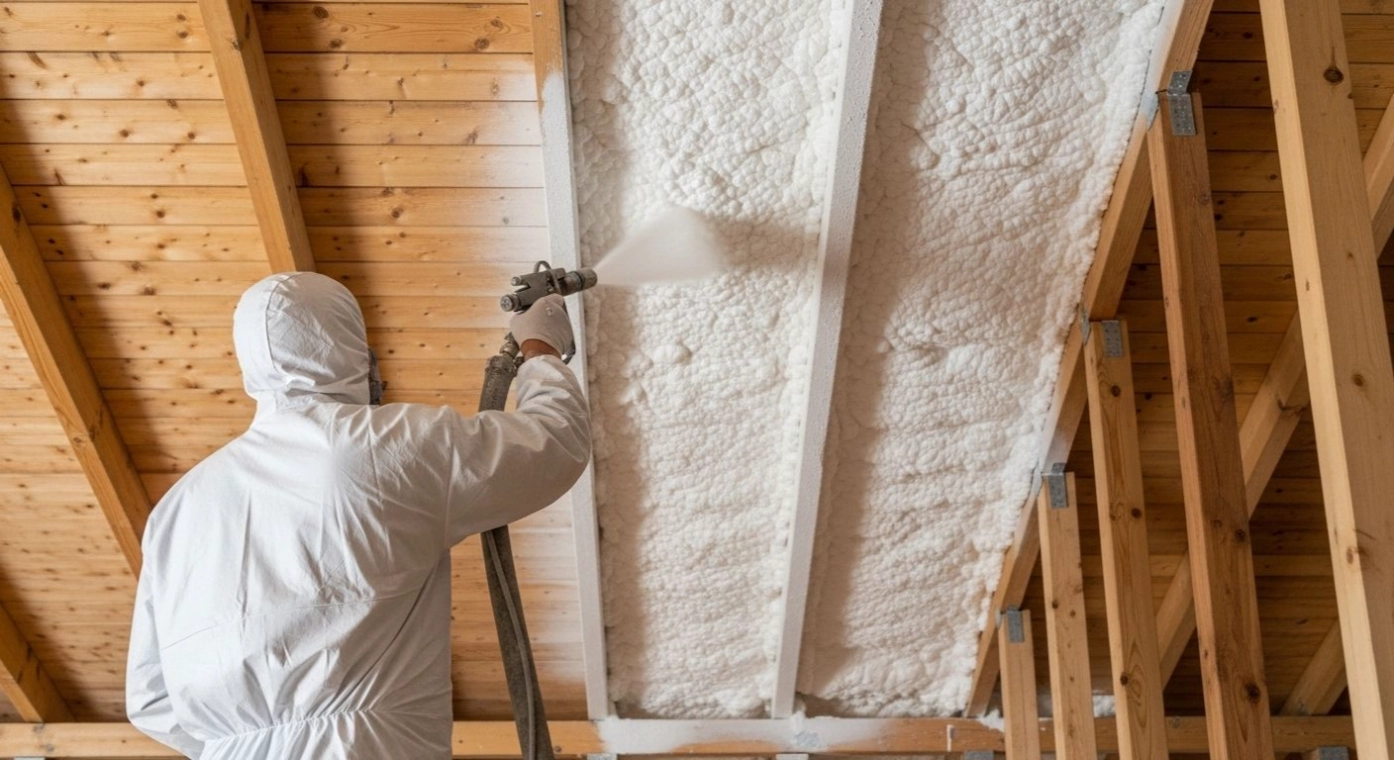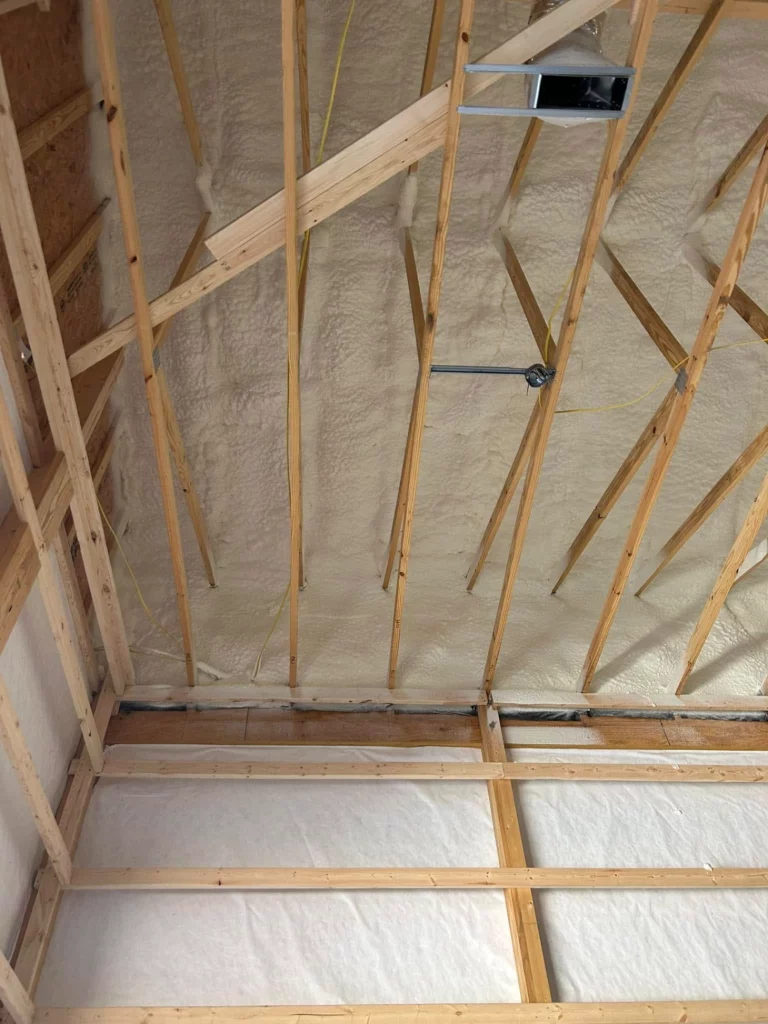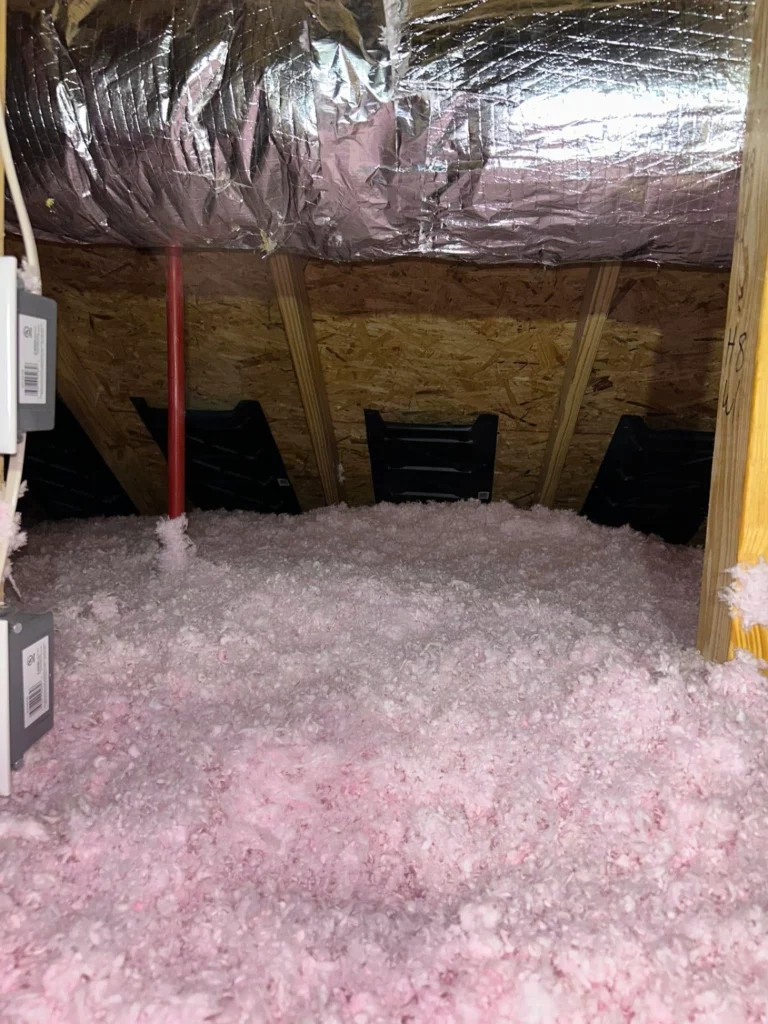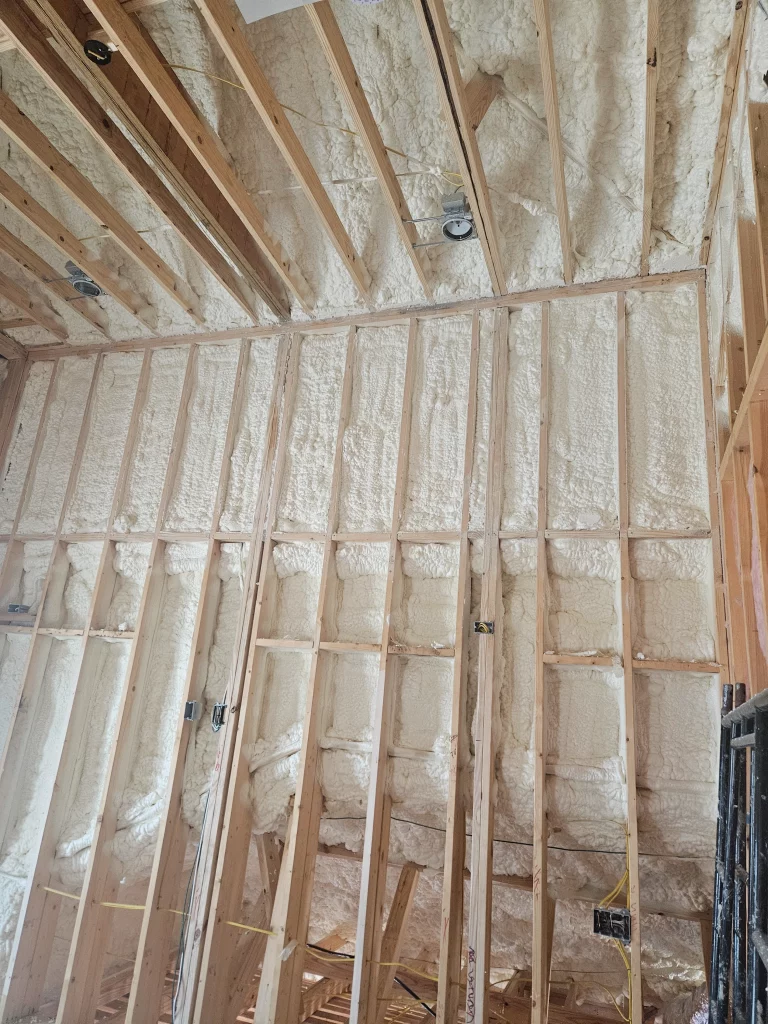Spray foam insulation works effectively in older homes when applied with proper assessment and preparation. The material seals air gaps, improves thermal efficiency, and helps reduce moisture infiltration. For homes built before modern insulation standards, spray foam can create a tighter building envelope, improving comfort and energy efficiency.
The performance depends on the home’s structure, condition of existing insulation, and whether there are issues such as old wiring or hidden moisture. When these factors are addressed, spray foam becomes a long-term solution that improves indoor comfort and reduces energy waste.
Key Advantages in Older Homes
Older homes often have drafty walls, under-insulated attics, and uneven heating or cooling. Spray foam insulation directly addresses these issues:
- Creates an air seal that prevents uncontrolled airflow.
- Reduces moisture infiltration, lowering the risk of mold.
- Provides high R-value per inch, maximizing efficiency in narrow wall cavities.
- Enhances indoor comfort by stabilizing temperatures.
Comparison of Spray Foam Options in Older Homes
| Spray Foam Type | Typical Application in Older Homes | R-Value per Inch | Best For | Limitations |
|---|---|---|---|---|
| Closed-Cell | Walls, basements, crawl spaces | 6.0–7.0 | Structural support, moisture resistance | Higher material density may require professional prep |
| Open-Cell | Attics, interior walls | 3.5–3.8 | Soundproofing, filling irregular cavities | Lower moisture barrier, not ideal for damp spaces |
Technical Performance Data for Older Homes
| Factor | Impact of Spray Foam |
|---|---|
| Air Leakage Reduction | Up to 40% lower compared to fiberglass (U.S. Department of Energy) |
| Energy Savings | Average heating and cooling cost reduction of 15–25% (Energy Star) |
| Longevity | 20+ years with minimal maintenance |
| Moisture Control | Closed-cell reduces vapor transmission by up to 90% |
Regional Considerations for North Carolina Homes
In North Carolina’s humid climate, moisture management is a key factor. Closed-cell spray foam is often preferred in basements and crawl spaces where humidity can enter. In attics, open-cell foam may be effective since it allows some breathability while maintaining insulation performance. Combining types based on location provides the best results.
Bonus Tip: In homes with older wiring or knob-and-tube systems, electrical safety should be inspected before installing spray foam.
Things to Check Before Installing Spray Foam
- Inspect existing insulation and remove degraded materials.
- Check for hidden moisture or leaks that may trap water behind the foam.
- Review electrical wiring for outdated systems that require upgrading.
- Evaluate ventilation needs, since spray foam tightens the building envelope.
Bonus Tip: Infrared scanning can identify heat loss areas before insulation is applied, ensuring precise installation.

Services That Address Older Home Insulation Needs
- Closed-Cell Spray Foam Insulation: Best for damp or below-grade areas, provides strong air and moisture barrier.
- Open-Cell Spray Foam Insulation: Suited for attics and interior cavities, effective at sound reduction.
- Wall Insulation: Improves comfort by sealing gaps in old wall structures.
- Basement Insulation: Prevents moisture intrusion and stabilizes basement air quality.
Common Questions Before Choosing Spray Foam
Can spray foam be applied over old insulation?
No, degraded insulation should be removed to avoid trapping moisture or pests.
Will spray foam damage old plaster walls?
No, when installed correctly it does not damage plaster, but access points may be needed for injection.
Is spray foam safe for older wood framing?
Yes, but closed-cell should be applied carefully to avoid excess pressure on brittle framing.
Can spray foam help with uneven temperatures in old houses?
Yes, it reduces drafts and stabilizes room-to-room temperatures.
Conclusion
Spray foam insulation works well in older homes when applied with proper assessment and preparation. It improves comfort, lowers energy loss, and addresses common problems in aging structures. Selecting the right foam type for each part of the home ensures long-term performance.
Contact For More Information
For older home insulation solutions, contact Raleigh Excel Spray Foam Insulation at [email protected] or call (919) 301-9435. Professional guidance ensures the right approach for your property’s unique structure and needs.
FAQS
How long does spray foam last in an older home?
Spray foam can last over two decades without significant deterioration.
Does spray foam require maintenance?
Minimal maintenance is needed, but annual inspections for moisture intrusion are recommended.
Can spray foam reduce pest intrusion?
Yes, it seals cracks and gaps that pests often use to enter.
What happens if roof leaks occur after spray foam is installed?
Leaks may be harder to detect, so routine roof inspections remain important.
Can spray foam improve home resale value?
Yes, improved energy efficiency and comfort can increase buyer interest and property value.







